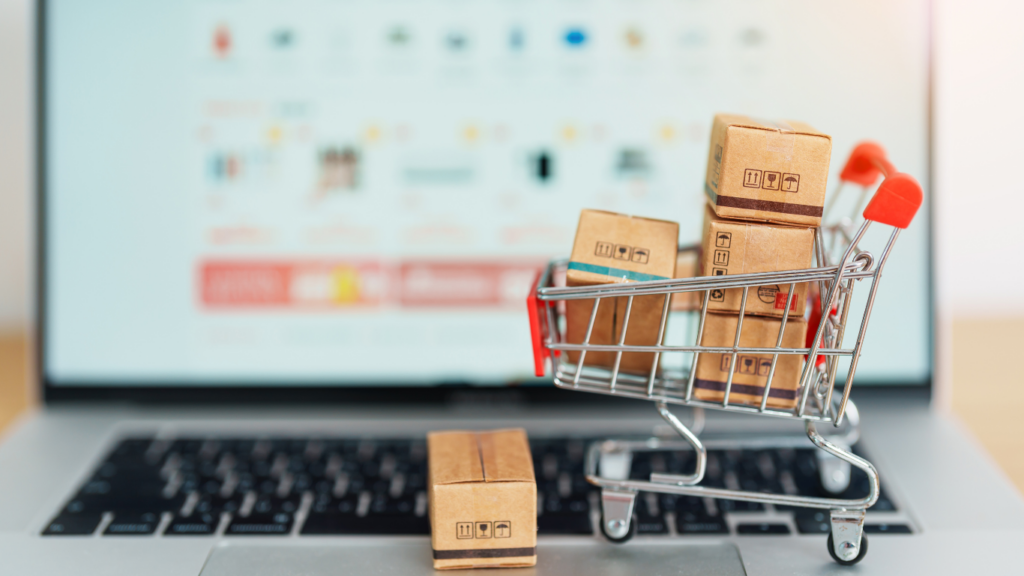Understanding the Importance of Safe Online Shopping
Online shopping has become an integral part of our lives, expanding convenience and variety. However, protecting my personal information and financial security is paramount. The increasing frequency of online scams and data breaches indicates that not all websites are trustworthy.
Identity theft and financial loss can result from unsafe online shopping practices. Cybercriminals exploit unsecured websites to steal credit card details and personal information. According to the Federal Trade Commission, identity theft affected 1.4 million individuals in the US in 2020 alone. By adhering to safety measures, I can minimize the risk of falling victim to these threats.
Secure websites play a critical role in safe online shopping. Recognizing HTTPS in the URL, rather than the less secure HTTP, ensures that my connection to a website is encrypted. This encryption mitigates the likelihood of data interception by third parties.
Strong, unique passwords enhance security further. Using a combination of letters, numbers, and special characters makes my password more difficult to guess. Avoid reusing passwords across multiple sites; instead, use a password manager to keep track of complex passwords.
Vigilance against phishing attempts is also essential. Cybercriminals often use email or SMS to trick users into revealing personal information or clicking malicious links. By double-checking sender addresses and looking for red flags like poor grammar or urgent requests, I can avoid these traps.
Understanding these critical aspects of safe online shopping helps me navigate the digital marketplace confidently and securely. It allows me to enjoy the benefits without compromising my personal information or financial security.
Researching Retailers
Before making any online purchase, it’s critical to research the retailer to ensure it’s reputable and trustworthy.
Checking Reviews and Ratings
I always start by checking reviews and ratings on multiple platforms. Trustpilot, Google Reviews, and the Better Business Bureau (BBB) offer valuable insights. High ratings and positive feedback signal reliability, while numerous complaints and low ratings indicate potential problems. Reading detailed reviews helps identify recurring issues, such as poor customer service or delayed shipping.
Verifying the Website’s Authenticity
To avoid phishing sites, I verify the website’s authenticity. I check the URL for spelling errors or odd variations and look for “HTTPS” in the address bar to ensure the connection is secure. Legitimate retailers typically have clear contact information, including a physical address and phone number. Checking the site’s security certificates and searching for any past reports of fraud or hacking incidents further confirm the site’s legitimacy.
Secure Payment Methods
Using secure payment methods is crucial for protecting financial information during online shopping. Implementing the right payment methods reduces the risk of fraud and ensures a safer shopping experience.
Using Credit Cards and Digital Wallets

Credit cards and digital wallets offer enhanced security features for online transactions. Credit cards, like Visa and Mastercard, typically provide fraud protection, allowing users to dispute unauthorized charges. For example, if a purchase is compromised, the card issuer can reverse the charge and investigate the matter.
Digital wallets, such as:
- PayPal
- Apple Pay
- Google Wallet
add another layer of security. These services encrypt financial data and often do not share card details with merchants, reducing the chances of data breaches. Moreover, digital wallets sometimes use biometric authentication, like fingerprint scanning, adding an additional safeguard.
Avoiding Money Transfers and Prepaid Cards
- Money transfers and prepaid cards pose significant risks when used for online shopping.
- Money transfers, through services like Western Union, lack fraud protection and are difficult to trace once completed.
- Scammers often request payments via money transfers because they make it easier to disappear with the funds.
- Prepaid cards, unlike credit cards, do not offer the same level of fraud protection.
- If a prepaid card is compromised, recovering lost funds is challenging. These cards do not provide the option to dispute transactions, making them a less secure option.
By prioritizing secure payment methods like credit cards and digital wallets, online shoppers can minimize risks and enjoy a safer shopping experience.
Protecting Personal Information
Avoiding identity theft and fraud is crucial when shopping online. By taking essential steps, users can safeguard their personal information.
Recognizing Phishing Scams
Phishing scams aim to steal sensitive information. Never click on suspicious links in emails or messages. Verify sender information before entering personal details. Look for signs like poor grammar, urgent language, or unfamiliar email addresses. Legitimate companies won’t ask for passwords or financial information via email.
Using Strong Passwords and Two-Factor Authentication
Using strong passwords is vital to account security. A strong password contains at least 12 characters with a mix of letters, numbers, and symbols. Avoid using easily guessable information like birthdays or common words. Enable two-factor authentication (2FA) for an added layer of security. 2FA typically involves entering a code sent to your phone in addition to your password, making unauthorized access more difficult.
Shopping on Secure Networks
Shopping online puts your personal and financial information at risk if networks aren’t secure. Follow these practices to protect yourself when shopping.
Avoiding Public Wi-Fi
Avoid public Wi-Fi connections when shopping online to protect sensitive data. Public networks lack encryption, making it easy for hackers to intercept information like credit card details and passwords. Use a Virtual Private Network (VPN) to encrypt your connection if accessing online stores outside a secure home network.
Ensuring Network Security at Home
Ensure your home network is secure to prevent unauthorized access and data breaches. Change default router passwords, and set a strong, unique password consisting of letters, numbers, and symbols. Enable WPA3 encryption in your router settings for the highest security level. Keep firmware updated to mitigate vulnerabilities.
Monitoring Your Accounts
Regularly monitoring your accounts can help quickly identify any unauthorized transactions, contributing to safer online shopping.
Reviewing Bank Statements Regularly
Check bank statements often to spot unfamiliar transactions. This helps catch fraudulent activities early. Online banking apps often provide transaction histories for easy access. Review each charge and report any discrepancies to your bank immediately. For convenience, set a reminder to review your statements weekly.
Setting Up Alerts
Enable account alerts through your bank or credit card provider. These alerts notify you of suspicious activities or large transactions. Most financial institutions offer customizable alerts via email or SMS. Set them up to receive notifications for transactions over a certain amount or when your balance changes. This proactive measure can help prevent significant financial losses.





